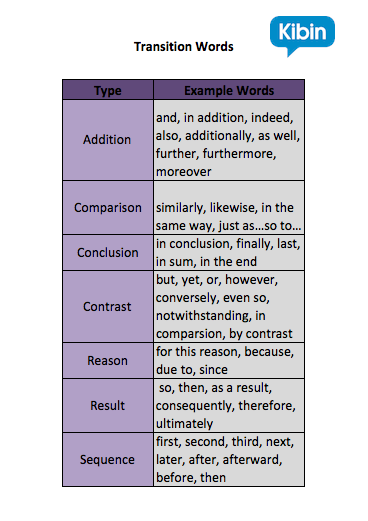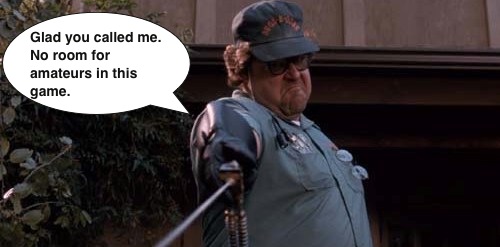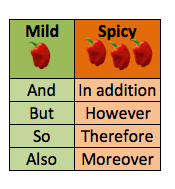Good transition words guide your reader from one thought in your writing to the next. They allow you to arrange your ideas in a clear and meaningful way that the reader can easily follow.
If you think of writing as being a type of journey, you can think of transition words as being like sign posts on this journey. They keep the traveler moving in the right direction and always aware of where she is headed.
Without transition words, your reader runs the risk of getting lost in a confusing jumble of disorganized thinking.
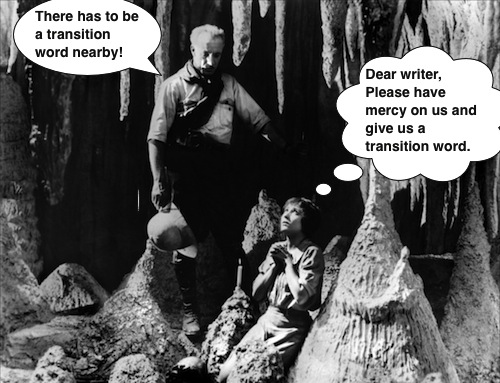 This post will teach you about the different transition words that are available and how to effectively use them in your writing.
This post will teach you about the different transition words that are available and how to effectively use them in your writing.
Example Transition Words
There are dozens if not hundreds of possible transition words and phrases. To help you understand, I’ve divided them into different categories based on their purpose. Here are the categories:
- Addition: transition words that build upon an idea, adding one thought to another.
- Comparison: transition words that show the similarities between two ideas.
- Conclusion: transition words that bring an idea to an end.
- Contrast: transition words that show the differences between two ideas.
- Reason: transition words that show the logical connection between two ideas.
- Result: transition words that show the consequences of an idea.
- Sequence: transition words that show the order of ideas in time and space.
As you can see, transition words serve a variety of purposes. For your convenience, I made a table of some of the more common transition words and separated them into categories.
Please note that this table serves as a good summary of transitions, but it isn’t comprehensive. If you want more examples, check out this extensive list of transition words.
Good Transition Words in Use
So, now you understand the different types of transition words that are available. Let me give you an example of how good transition words can help improve your writing.
First, I will write a paragraph using no transition words at all.
Sophie was bitten by a black widow when she was a child. Sophie spent several days in the hospital recovering. She still has a red scar on her leg where the spider bit her. Sophie is afraid of spiders. Every year she gets her house sprayed by an exterminator.
Now I will revise that same paragraph with a few well-placed transitions. I will highlight my transition words in green so you can follow along.
Sophie was bitten by a black widow when she was a child. As a result, she spent several days recovering in the hospital. To this day, she has a red scar on her leg where the spider bit her, and she is still afraid of spiders. For this reason, every year Sophie gets her house sprayed by an exterminator.
Let’s break this down.
- “As a result” shows the reason for Sophie’s hospital stay.
- “To this day” shows that time has passed since Sophie was bitten and illustrates the sequence of events.
- “And” allows us to include the additional effects of the spider bite, without the trouble of starting a new sentence.
- “For this reason” shows the result of her past experience (getting bitten) on her present behavior (hiring an exterminator).
The transition words in the second paragraph helped to guide the reader through the time and space of Sophie’s story.
Transition Words Are Like Hot Sauce
As you choose transition words be aware that some transition words are spicier than others—a little goes a long way.
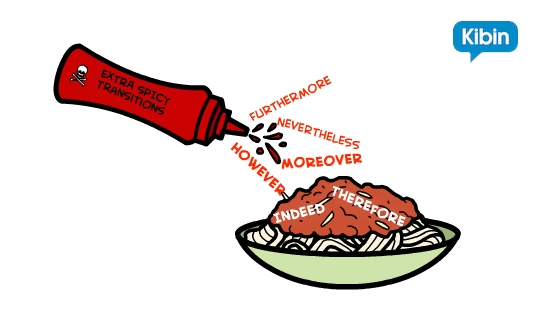 I’ve edited many papers where the author overuses spicy transitions such as “however,” “moreover,” and “therefore.” These words may sound impressive, but when they are overused, they turn your writing into a sticky mess. Consider the following example:
I’ve edited many papers where the author overuses spicy transitions such as “however,” “moreover,” and “therefore.” These words may sound impressive, but when they are overused, they turn your writing into a sticky mess. Consider the following example:
“Indeed, after a three month search, Roger landed a tree-trimming job. However, he wasn’t certain that it was the right job for him. Moreover, he was afraid that he wasn’t qualified for the work. In addition, the sophisticated power tools he would have to learn intimidated him. Therefore, he intended to decline the offer and keep searching for work.”
Can you see how the overuse of spicy transition words has made this paragraph more difficult to read than necessary?
Here’s a revision that cuts some of the spicy transitions and replaces others with milder versions.
“After a three month search, Roger landed a tree-trimming job. But, he wasn’t certain that it was the right job for him. He was afraid that he wasn’t qualified for the work, and the sophisticated power tools he would have to learn intimidated him. So, he intended to decline the offer and keep searching for work.”
As you can see, I cut a couple of the words (“indeed,” “moreover”). I also traded the strong, intrusive transition words for milder transitions that don’t interrupt the flow of the paragraph.
Milder transition words tend to be shorter and use more common language than the spicier ones.
Here’s another thing to note about spicy transitions. Transitions are stronger when they are the first word in the sentence and less powerful when they are a few words in. One great example of this comes with the word “however.” Consider the following sentence:
“It seems that the aliens have come in peace. However, life as we know it will be altered forever.”
In this example, “however” has been placed at the beginning of the second sentence, making it a more forceful transition. This is important if you really want to emphasize the transition.
But watch what happens if we move the transition word forward in the sentence.
“It seems that the aliens have come in peace. Life as we know it, however, will be altered forever.”
In this example, the emphasis of the transition word “however” is lessened.
Speaking of intrusive transition words, I want to make one other note. When listing out a sequence using numbers, you should write “first, second, third, fourth, fifth, etc.” Don’t write “firstly, secondly, thirdly, fourthly, fifthly…etc.” These words get pretty ridiculous the longer your list.
All that said, sometimes the spicy transition words are better word choices. This can be especially true in academic or scientific writing—although you should still use them intentionally. It all depends on the purpose and audience of your work.
Good Transition Words: A Summary
Good transition words help your reader get from point A to point B seamlessly and effortlessly. They serve their purpose without standing out as being intrusive or distracting.
Good transitions work best as background players, discretely guiding your readers through your ideas from one topic to the next.
For more great information about writing good transitions, read How Comedians Teach You to Write Good Transition Sentences.
Good luck!
